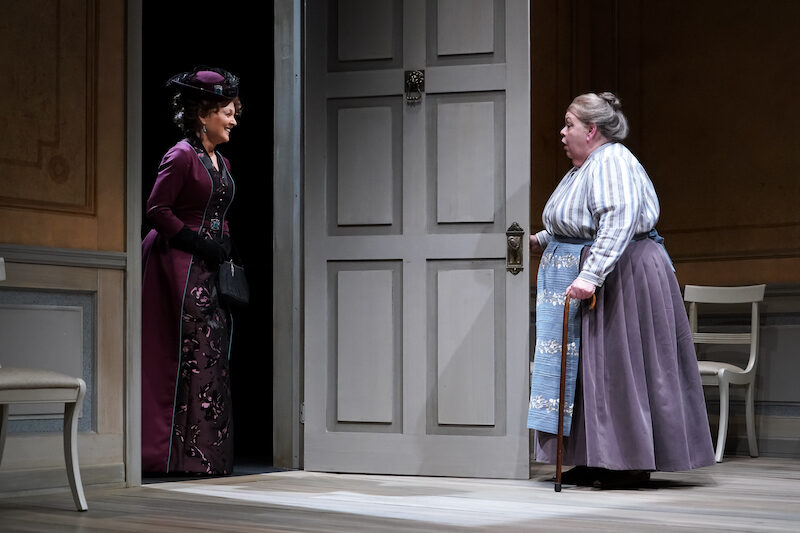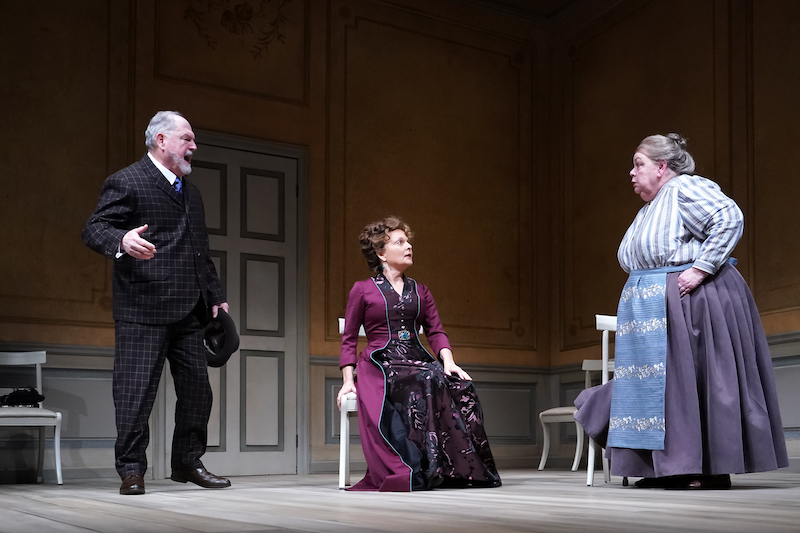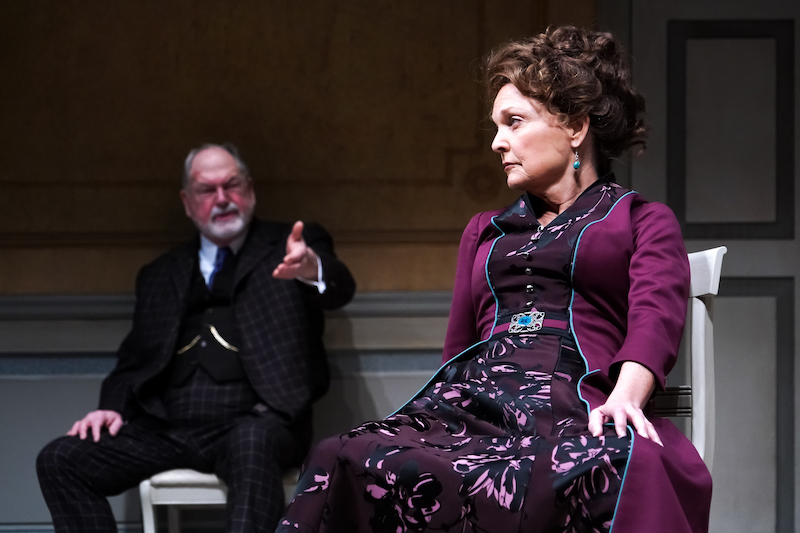Questions Better Left Unanswered: A Doll’s House, Part 2
Review of A Doll's House, Part 2 at Seattle Repertory Theatre.
Written by TeenTix Newsroom Writer Kendall Kieras, and edited by Teen Editor Huma Ali!

A Doll’s House, Part 2, starts with a door. Written by Lucas Hnath in 2017, the play begins with the same door Nora Helmer shut on her children and husband fifteen years earlier. Now, instead of slamming the door, she is entering it, announcing a return she hopes will be brief.
In those first moments, entering a door once exited, the audience knows exactly what they are in for—a tying up of loose ends as only a sequel can, and an attempt at addressing all the unanswered questions taking shape in those she left behind fifteen years ago.
The ending of the original A Doll’s House, written by Henrik Ibsen and released all the way back in 1879, sparked a massive public outcry. Ibsen’s Nora Helmer is an upper-class married woman who decides to leave her children and doting husband to seek out life on her own. As a play which depicted a woman putting her own interest above others, it was revolutionary for its time. The play ends in one of the most revolutionary feminist actions in theater history: Nora slamming a door shut behind her.
Nora, played by Broadway legend Pamela Reed, has returned to her past life in order to officially be divorced from her husband, Torvald, played by Seattle theater legend Michael Winters. Throughout her homecoming, she is forced to contend with the fallout of the relationships she left behind. The play is almost no action and all conversation, the entirety of which taking place within Nora’s old living room. The lack of action allows the play to center completely on the complicated relationships between Nora and the family she left.

As Nora reunites with these characters, they reveal to her both the perfect and imperfect constructions of her that they’d developed after she’d left. Torvald, Nora’s ex-husband, sees her as both the woman who left him and the woman he once loved. Annemarie, the caretaker depicted by Laura Kenny, sees her as the child she raised and the woman who abandoned her children. Emmy, her daughter played by Khahn Doan, sees her as both her mother and a stranger. Nora must learn to navigate her past while still defending her actions, both of which shape the person she has become.
However, the play still misses the mark at some critical points. Perhaps because the playwright was male, Nora’s ‘independence’ felt foolish and uncompelling. Nora’s character was allowed to go on extended feminist rants, speaking only of vague oppression and echoing the hollowed stereotype of a blathering, idealistic feminist. In her explanation of the freedom she’s found, she never speaks to the power of finding her own voice, but rather how others view her transformation. Nora tells Torvald of how her career as a writer impacted other women, but never how it impacted her. She emphasizes her promiscuity and property ownership, but never how those freedoms truly impacted her. Nora felt like the voyeur of a strong female character through male eyes, rather than a truly strong female character.
The theme at the heart of the original A Doll’s House, and what made it so shocking, was that Nora sought her own freedom above anyone else’s. There was a reason why the questions A Doll’s House prompted were left unanswered. The original play’s script did not inquire about the other characters feelings regarding Nora’s leaving—it was not their story, it was hers.
I had the opportunity to play Nora in Ibsen’s play, and found that yes, her character was naive and flawed, but she was radical in that she left in full knowledge of the consequences. Putting Nora in situations where she must defend her actions time and time again undermines the original intent of the work. The plot of the show almost seemed a deliberate attempt to water down Nora’s radicality. The original Nora was self interested, this Nora was selfish. Original Nora was a rebel, this Nora, an atomic bomb. This play answered the questions prompted by the original honestly, but some things are better left alone.

One of the most tender scenes of the production comes as Nora reconciles with Torvald for a second time. As the ex-couple lay out a conversation equal parts anger and nostalgia, Torvald says “a lot of what we do is lying—especially when we what we want so badly from other people is for them to love us.” This message certainly would be out of place in Ibsen’s original, but in the midst of Part 2, it felt raw and stinging. The line lent itself to the complex moral of the show: that much of our action, despite our assertion otherwise, is creating ourselves as a method to seek out love. Each of the characters in the show, in their own unique ways, do just that—acting out a desperate instinct to create oneself to align with the affection they desire. As the show comes to a climax, Torvald and Nora hold hands and sit in silence for a few moments.
Finally, Nora is able to leave for the second time, this time, with something she didn’t have before: understanding. Abandoning her home for the second time, she re-asserts the same values she sought out on her first leaving. Describing the world of equality she dreams of, Nora notes, “I just hope I get to see it.” It is a line which, in comparison to Ibsen’s radical ending, rings hollow. However, as Nora closes the door on the life planned out for her for the second time, something within me still followed her.
Lead photo credit: Pamela Reed and Laura Kenny in Seattle Repertory Theatre’s production of A Doll’s House,
Part 2. Photo by Alan Alabastro.
The Teen Editorial Staff is made up of 5 teens who curate the review portion of the TeenTix blog and manage the TeenTix Newsroom. More information about the Teen Editorial Staff can be found HERE.
The TeenTix Press Corps promotes critical thinking, communication, and information literacy through criticism and journalism practice for teens. For more information about the Press Corps program see HERE.


